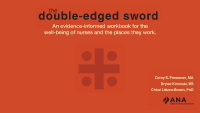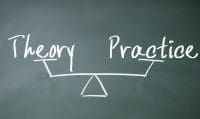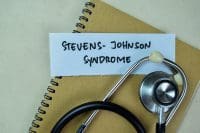Can symptomatic relief from fear, stress, anxiety, and a laundry list of other ailments really be at your fingertips? The many people who use Emotional Freedom Techniques (EFT) think so.
EFT has been called an emotional version of acupuncture because it stimulates energy meridians (or acupoints), using a simple tapping of the index and middle fingers. No acupuncture needles required! EFT was developed about 20 years ago by Gary Craig, a student of psychologist Roger Callahan, who created Thought Field Therapy (TFT). Craig’s goal was to develop a simpler version of TFT that everyone could use.
The core principle of EFT is that negative emotions result from an imbalance in the body’s energy system. When you have a negative experience, you experience negative emotions that disrupt the body’s energy system. EFT addresses the energy imbalance and the negative emotions.
Traditional treatment for psychological conditions—such as depression, phobias, stress, and posttraumatic stress—usually consists of long-term counseling and drug therapy. EFT practitioners believe that tapping provides more immediate relief because it interrupts the energy of the negative emotions.
How does EFT work?
Practitioners of EFT see tapping as a psychotherapeutic tool that provides relief from physical and psychological problems, including weight gain, high blood pressure, depression, and panic disorders.
Eastern medicine, which goes back thousands of years, operates on the principle that when energy fields are unbalanced, the result is distress in the body. And to restore equilibrium, you must manipulate the corresponding acupoints.
Western researchers believe that tapping causes a global, nonspecific release of serotonin and a release of gamma-aminobutyric acid, an inhibitory amino acid, resulting in decreased distress.
One-two-three-tap!
Nurses interested in learning how to perform EFT can download a free tutorial that explains the process in detail at www.emofree.com/home.htm. Here’s the basic process:
- Setup. Begin by repeating a basic affirmation out loud three times while vigorously tapping the karate chop point (located at the fleshy part of the outside of the hand). The affirmation is “Even though I have this ________ (fill in the blank; for example, fear of public speaking, headache, or stress), I deeply and completely accept myself.”
- Sequence. Repeat the reminder phrase (“this fear, this headache, or this stress”) and tap each energy point seven times. The energy points are:
- eyebrow (EB)—just above the nose where the eyebrow begins
- eye bone (SE)—the bone outside the corner of the eye
- under eye (UE)—about 1 inch below the pupil
- under nose (UN)—between the bottom of the nose and the top of the upper lip
- chin (CH)—midway between the point of the chin and the bottom of the lower lip
- collarbone (CB)—the junction where the sternum, collarbone, and first rib meet
- underarm (UA)—about 4 inches below the armpit.
- below nipple (B)—about 1 inch below the nipple in men and where the breast meets the chest wall in women
- thumb (TH)—the outer side of the thumb
- index finger (IF)—the side of the index finger facing the thumb
- middle finger (MF)—the side of the middle finger
- baby finger (BF)—the inside of the baby finger
- karate chop (KC)—the fleshy part of the outer hand.
- Nine gamut procedure. Continuously tap the gamut point (located on the back of the hand about ½ inch between the base of the knuckle of the ring and baby fingers) while performing these steps:
- Close eyes.
- Open eyes.
- Look to lower right.
- Look to lower left.
- Roll eyes in a circle.
- Roll eyes in the opposite direction.
- Hum 2 seconds of a song.
- Count to 5.
- Hum 2 seconds of a song.
- Repeat the sequence step.
Valuable tool
Proponents of EFT say that it’s not meant to replace traditional psychological or physical health care, but to provide an additional tool that can quickly and easily reduce symptoms of psychological or physical distress. EFT shouldn’t be used to treat serious psychological conditions, unless the practitioner is a qualified professional with experience treating them.
EFT is noninvasive and easy to use. And people have reported immediate relief. So EFT just may be a valuable tool nurses can use in their personal and professional lives to reduce headaches, anxiety, fear, and more.
Selected references
Emotional Freedom Techniques. www.emofree.com/home.htm. Accessed November 6, 2007.
Ruden R. Why tapping works: speculations from the observable brain. www.energypsych.org/displaycommon.cfm?an=1&subarticlenbr=28. Accessed November 6, 2007.
Waite W, Holder M. Assessment of the Emotional Freedom Technique: an alternative treatment for fear. www.srmhp.org/0201/emotional-freedom-technique.html. Accessed November 6, 2007.
Wells S, Polglase K, Andrews H, et al. Evaluation of a meridian-based intervention: Emotional Freedom Techniques (EFT), for reducing specific phobias of small animals. J Clin Psychol. 2003;59(9):943-966.
Joan C. Borgatti, MEd, RN, is owner of Borgatti Communications, which provides writing, editing, and coaching services. Her website is www.joanborgatti.com.


















